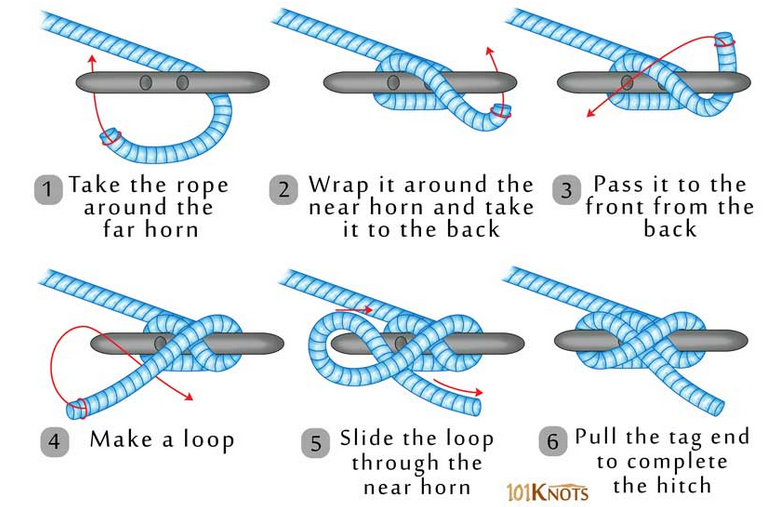Knots
There are several knots that each cruising sailor should be able to tie. More instruction is available on the Internet sites like https://www.101knots.com/category/sailing-knots
The basic knots everyone should know are:
- Figure of 8: Used at the ends of sheets and halyard as a stopper, but never on dock lines

- Clove Hitch or Ground Line Hitch: Used to hang fenders

- Round Turn and Two Half Hitches: Used to hang fenders or tie to a post
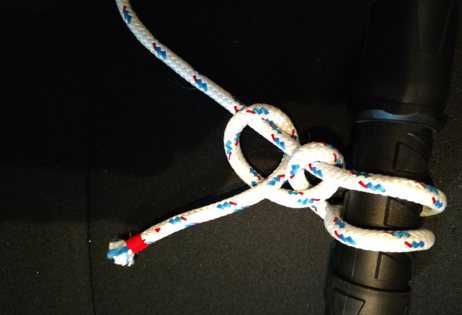
- Girth Hitch (aka Cow Hitch): Used to hang the dock lines on the lifelines or railing, also for tying jib sheet to the clew or attaching a dockline to a cleat on the boat. Make the coils extra long to be able to secure the line properly.
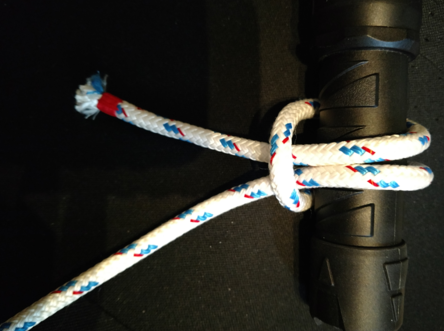

- Looped sail tie with slipped half hitch: To secure the mainsail after flaking
- Bowline: To tie the lifesling line to the boat. Very useful whenever we need a fixed loop
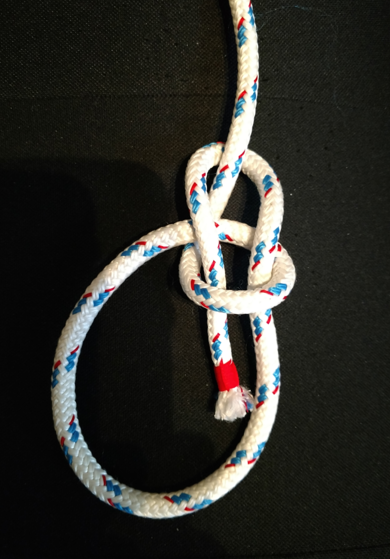
- Sheet Bend (double preferred) or Zeppelin Bend: Used to tie two end of a line together

Zeppelin Bend
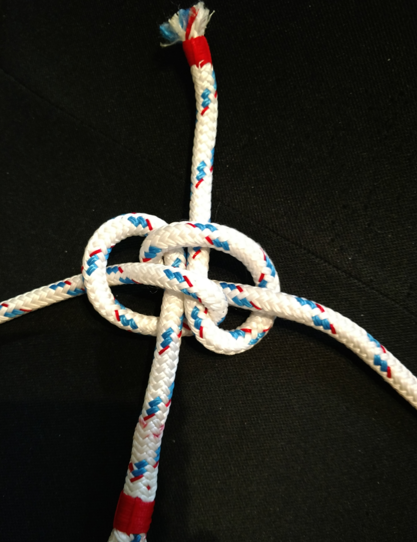
- Square Knot: Used to secure the loose foot of the sail with reef points.

- Coiling a Line: Used to store lines. Do not try to remove the twist, let it form a figure 8 shape as the coils form. This is a natural tendency of ropes due to their construction. Make the coils reasonably long and then wrap the working end 3-4 times before securing it. https://www.youtube.com/watch?v=K-TV9cnzI3E
- Cleat Hitch: Take the line to the far side of the horn relative to where the line is coming from the boat
- Capture the other side of the cleat by taking the line half way around the base
- Cross the line twice over the top, and lock in the next cross by flipping the line to capture it
- Flip away from the entering line to lock it so that it is exiting in opposite direction to the entering line
